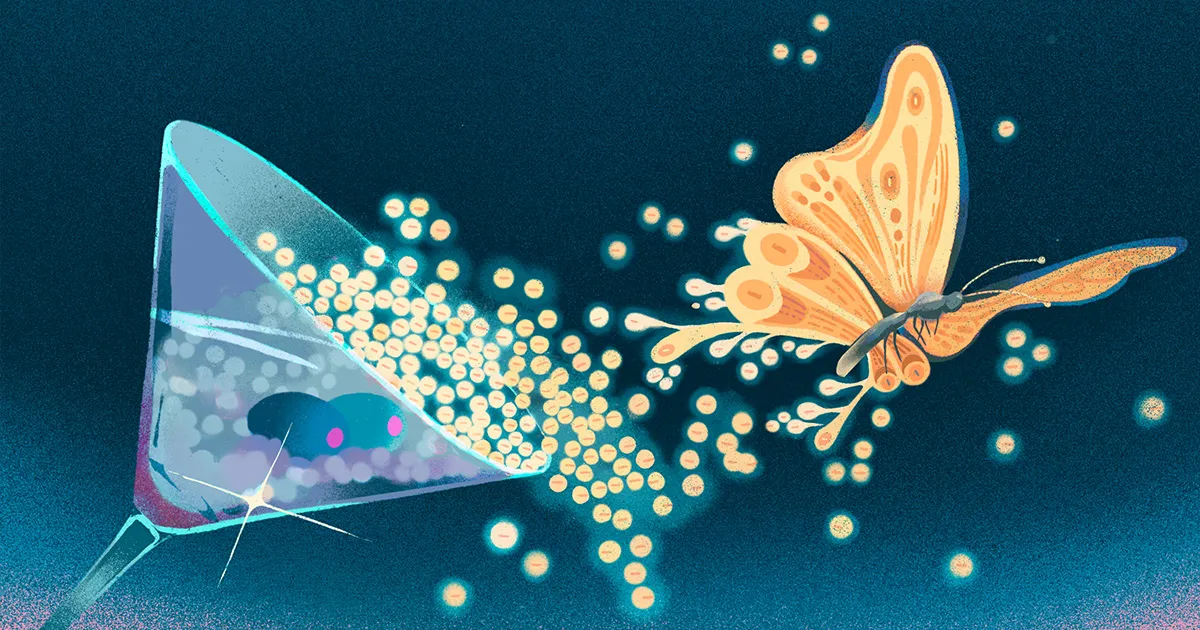
In a groundbreaking exploration of quantum mechanics, a team of mathematicians in Germany faced a daunting challenge: solving the Schrödinger equation when the variable alpha was irrational. While they understood that rational values of alpha—whole numbers or fractions—allowed for possible solutions, irrational values posed an insurmountable obstacle. Among these mathematicians, Hofstadter took a unique approach, leveraging his existing knowledge and a calculator to unveil the mysteries of quantum energy levels.
Rather than grappling with the complexities of irrational numbers, Hofstadter programmed his calculator to process rational values of alpha. Each night, he would set the machine to work, generating a scroll of paper filled with the permitted and forbidden energy levels of electrons. Every morning, he would return to find a detailed output, which he meticulously plotted on graph paper. This labor of love led to the creation of the Hofstadter butterfly, a graph that visually represented the intricate patterns of energy levels, resembling the wings of a butterfly due to its distinctive negative space.
Despite the elegance of his findings, Hofstadter's peers were largely skeptical. They humorously likened his efforts to spinning straw into gold, dubbing his calculator “Rumpelstilzchen.” Even his adviser dismissed his work as mere numerology, threatening to withdraw funding. Hofstadter recounted, “He was implying that I was being superstitious and talking nonsense.” However, the beauty of the butterfly graph fascinated him, revealing a significant pattern: as he entered more complex fractions, the allowed energy levels displayed increasing gaps, forming a fractal pattern similar to the Cantor set.
The Cantor set, named after mathematician Georg Cantor, is derived through a simple iterative process: divide a line segment into three equal parts and remove the middle third. This process, when repeated infinitely, yields an infinite set of points scattered along the number line. Hofstadter hypothesized that as rational values of alpha approached an irrational number, the energy levels would indeed reflect a Cantor set. His intuition was compelling.
Years later, renowned mathematicians Barry Simon and Mark Kac independently arrived at a similar conclusion while studying almost-periodic functions. Their lunchtime discussions in 1981 highlighted the Schrödinger equation’s behavior with irrational alpha values, suggesting that the energy levels should form a Cantor set. Despite their insights, they struggled to prove this theory, leading to Kac's lighthearted wager of ten martinis for anyone who could solve the problem, which ultimately became known as the ten martini conjecture.
Over the years, mathematicians made strides by proving the conjecture for specific irrational values of alpha, but a comprehensive proof remained elusive. In 2003, Svetlana Jitomirskaya faced disappointment when a rival, Joaquim Puig, proved the conjecture for nearly all irrational cases, using techniques she had developed. However, Jitomirskaya and a young mathematician, Artur Avila, collaborated to tackle the remaining cases, ultimately publishing their proof in the prestigious Annals of Mathematics.
Their proof, while significant, raised questions about its applicability to real-world scenarios, where conditions are often more complex. The original conjecture assumed a simplified model that didn’t account for the intricacies of atoms in solids or variable magnetic fields. Jitomirskaya expressed concerns about the practical implications of their proof, stating, “You’ve verified it for this one model, but what does that have to do with reality?”
In a surprising twist, Hofstadter’s butterfly was observed experimentally in 2013 when physicists at Columbia University captured the quantum fractal using thin layers of graphene in a magnetic field. This realization transformed the butterfly from a mathematical curiosity into a practical phenomenon, igniting further interest in its mathematical foundations.
In 2019, the introduction of Lingrui Ge to Jitomirskaya’s team sparked new developments. Inspired by Avila’s work on almost-periodic functions, Ge proposed a “global theory” to uncover higher-level structures in these functions. This innovative approach allowed for the resolution of various forms of the ten martini problem without the need for a patchwork proof.
The recent advancements highlight the profound connections between number theory and quantum physics, solidifying the Hofstadter butterfly's place as a significant real-world phenomenon. The mathematicians involved anticipate that their findings will lead to further insights and applications in the future. “We found this hidden mystery behind the global theory,” Ge remarked, capturing the excitement of ongoing mathematical exploration.